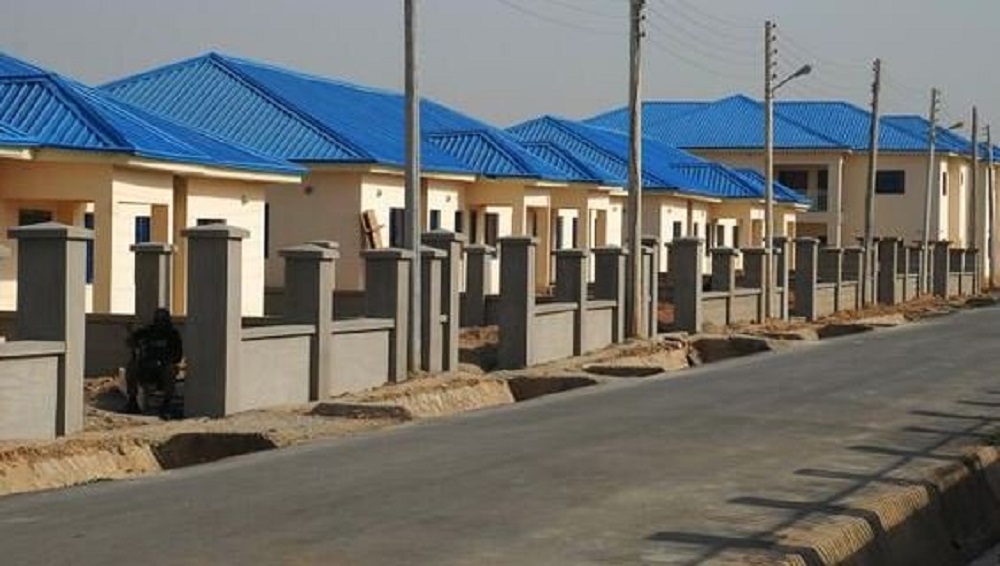Fresh building blocks were again laid recently in Lagos, unto Nigeria mortgage finance sub-sector, when key operatives gathered to unveil an N3 billion facility, which will fund 30 per cent equity contribution under the National Housing Fund (NHF).
The fund, known as Mutual Alliance Mortgage Fund (MAMF) is targeted at bridging the housing deficit and offer hope of realising the dream of becoming homeowners, particularly for staff of the Federal parastatals, Ministries, Departments and Agencies (MDAs) from the capital market.
Essentially, the facility will be funding the equity contribution of the beneficiaries or off-takers under the Federal Mortgage Bank of Nigeria (FMBN)’s NHF to the tune of 30 per cent. It was gathered that MDAs staff finds it difficult to pay their equity as a single upfront and lump-sum due to their moderate earnings.
The fund, sponsored by Mutual Alliance Mortgage Bank Limited, has already been approved and registered as a close-ended unit trust scheme. Goldbanc Management Associates Limited(GMA) and GTI Asset Management and Trust Limited are issuing house and fund manager respectively while United Bank for Africa (UBA) is the custodian of the fund.
Speaking at All Professional Parties Meeting in Ikoyi, the Managing Director, Goldbanc Management Associates Limited, Mr. Olu Sanya, said the facility provides the fund with longer tenure and enables mortgage manager to have a longer cycle of recreating mortgages for more MDAs, adding that the plan is to create a mortgage of N10billion with an N3billion fund.
Sanya explained that the fund was packaged to encourage participation by pension fund administrators and insurance companies, adding that it provides unitholders with opportunities to earn attractive returns from investment grade instruments such as mortgage assets, money markets and fixed income instruments.
According to the Managing Director, Mutual Alliance Mortgage Bank Limited, Dr. Okon Amasi, mortgage-backed by money market is expensive, stressing that the instrument will reduce the cost of housing in Nigeria. “It is the beginning of capital market taking over a mortgage from the money market,” he said.
In his presentation, Akeem Akinfenwa said despite huge opportunity in the housing and mortgage business in the country, effective demand remains very low. “At 17million deficit with a basic housing unit estimated at N5million/unit, there is about N85 trillion market.
“Despite the massive opportunities, the mortgage market remains small, underdeveloped and costly, ratio of outstanding mortgages to Gross Domestic Product stands at 0.6 per cent compared to 50per cent in Europe. Returns on Investment (ROI) remains good and positive ranging from 18- 30per cent and tenors is around one to six years qualifying to be called housing finance and not mortgage.”
Akinfenwa said the only true mortgage available in Nigeria remains the FMBN’s NHF that gives beneficiaries longer tenure at an interest rate of between six-eight per cent at the value of N5 – N15million.
He said the staff of Federal MDAs was targeted because their gross income, particularly for the middle and upper managerial level officers are comparable with the earnings in the private sector.
“They have a more reliable employment stability when compared to the private sector and the newly introduced Integrated Payroll and Personnel Information System (IPPIS) has made information on earnings of public servants verifiable and easier to place a lien on for loan administration by third parties,” Akinfenwa said.
He explained that MAMF is a Special Purpose Vehicle (SPV), which is separate from the mortgage manager – Mutual Alliance Mortgage Bank Limited. “The SPV will have life members made up of institutions and professionals that will ensure the protection of the fund as well as the assets so created,” he said.
Akinfenwa further disclosed that a fund manager has been chosen with requisite asset management experience to determine the fund utilisation model, be in charge of the day to day running of the fund and give a competitive ROI to potential investors.
“Returns on investment will be interest and dividend payments. Interest should be 12 per cent yearly. Interest for year one will be lump sum and paid at the end of the year while semi-yearly payments of interest will commence first half of the year two and every half year through the tenor of the fund,” he added.
Source : The Guardian




